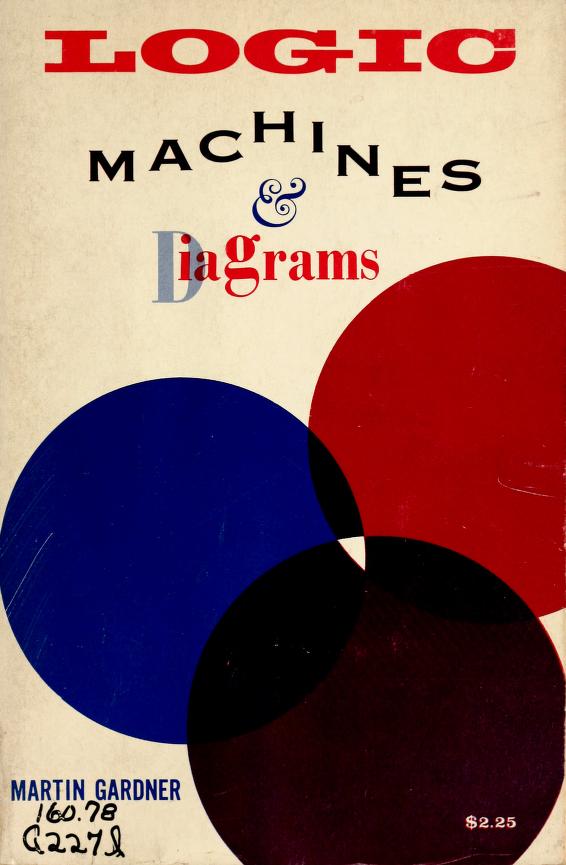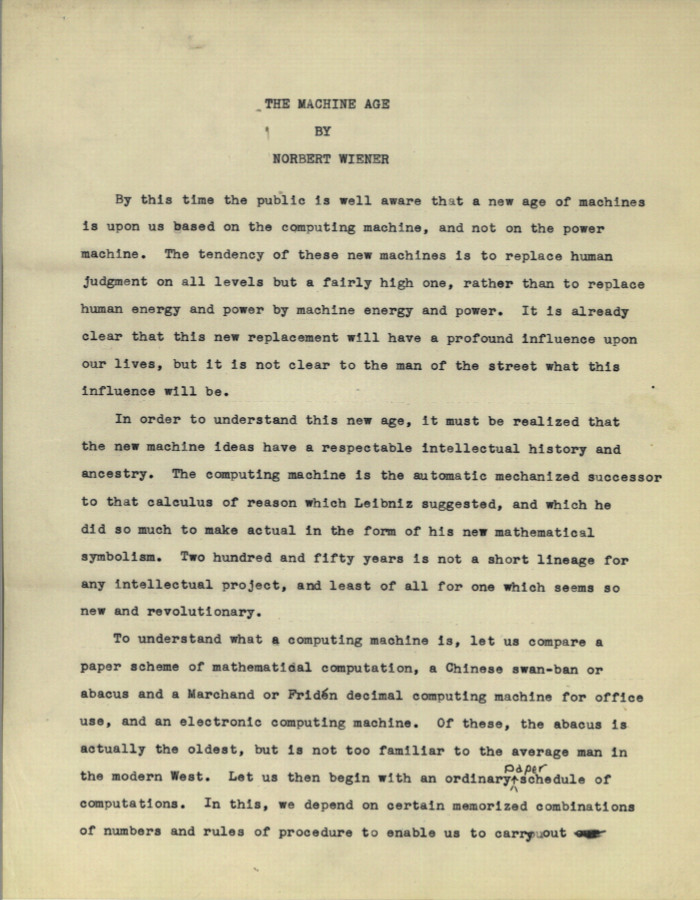Martin Gardner: Logic Machines and Diagrams (1958)
Filed under book | Tags: · diagram, logic, machine, mathematics, science

“A logic machine is a device, electrical or mechanical, designed specifically for solving problems in formal logic. A logic diagram is a geometrical method for doing the same thing. The two fields are closely intertwined, and this book is the first attempt in any language to trace their curious, fascinating histories. [..]
The reader may wonder why so much of the first chapter is devoted to the life and personality of Ramon Llull. The answer is that Ramon’s life is much more fascinating than his eccentric logic. Other logicians mentioned in the book may have been far from dull to those who knew them, but with the possible exception of Lord Stanhope, recorded details of their lives are comparatively drab and colorless. Llull’s Quixotic career is little known outside of Spain and France, and I make no apologies for introducing the reader to one of the most remarkable tragicomic figures of the Middle Ages.” (from the Introduction)
The book also covers logic diagrams and card methods for solving logical problems by Venn, Lambert, De Morgan, Peirce, Cunynghame, Lewis Carroll, and Gardner himself, and logic machines by Stanhope, Jevons, Marquand, and others.
Publisher McGraw-Hill, New York/Toronto/London, 1958
ix+157 pages
Review: W. Mays (Journal of Symbolic Logic).
PDF
Internet Archive (more formats)
Norbert Wiener: The Machine Age (1949)
Filed under paper | Tags: · computing, machine, mathematics

In 1949, The New York Times invited MIT mathematician Wiener to summarize his views about ‘what the ultimate machine age is likely to be,’ in the words of its longtime Sunday editor, Lester Markel. Wiener accepted the invitation and wrote a draft of the article; but Markel was dissatisfied and asked him to rewrite it. Wiener did. But things fell through the cracks and his article was never published.
It languished in the MIT Libraries’ Archives and Special Collections until December 2012, when it was discovered by Anders Fernstedt, an independent scholar who is researching the work of Karl Popper. Almost 64 years after Wiener wrote it, his essay is still remarkably topical, raising questions about the impact of smart machines on society and of automation on human labor. (from The New York Times)
Previously unpublished
Written in 1949, Manuscript Version 3
Creative Commons Attribution-NonCommercial license
8 pages
commentary (The New York Times, May 2013)
commentary (Angela Mitropoulos, September 2013)
Guide to the Papers of Norbert Wiener (MIT Libraries)
PDF (no OCR)
PDF (no OCR, Alt link)
Reviel Netz: The Shaping of Deduction in Greek Mathematics: A Study in Cognitive History (1999)
Filed under book | Tags: · geometry, history of mathematics, history of science, mathematics, science

“The aim of this book is to explain the shape of Greek mathematical thinking. It can be read on three levels: first as a description of the practices of Greek mathematics; second as a theory of the emergence of the deductive method; and third as a case-study for a general view on the history of science. The starting point for the enquiry is geometry and the lettered diagram. Reviel Netz exploits the mathematicians’ practices in the construction and lettering of their diagrams, and the continuing interaction between text and diagram in their proofs, to illuminate the underlying cognitive processes. A close examination of the mathematical use of language follows, especially mathematicans’ use of repeated formulae. Two crucial chapters set out to show how mathematical proofs are structured and explain why Greek mathematical practice manages to be so satisfactory. A final chapter looks into the broader historical setting of Greek mathematical practice.”
“This is, without contest, the most important book of science studies to appear since Shapin and Schaffer’s Leviathan and the Air-Pump.” (Bruno Latour in his review for Social Studies of Science)
Publisher Cambridge University Press, 1999
Volume 51 of Ideas in Context
ISBN 0521622794
327 pages
review (Nathan Sidoli, Educational Studies in Mathematics)
review (Jens Høyrup, Studia Logica)
review (Christian Marinus Taisbak, Mathematical Association of America)

